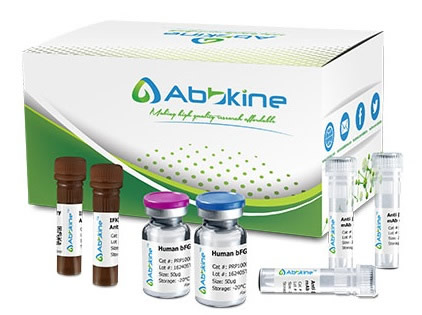Hydrolases are transported to lysosomes after binding to mannose 6-phosphate receptors in the trans-Golgi network. N-acetylglucosamine-1-phosphodiester alpha-N-acetylglucosaminidase (NAGPA) catalyzes the second step in the formation of the mannose 6-phosphate recognition marker on lysosomal hydrolases. Commonly known as 'uncovering enzyme' or UCE, NAGPA removes N-acetyl-D-glucosamine (GlcNAc) residues from GlcNAc-alpha-P-mannose moieties and thereby produces the recognition marker. The encoded preproprotein is proteolytically processed by furin to generate the mature enzyme, a homotetramer of two disulfide-linked homodimers. Mutations in NAGPA are associated with developmental stuttering in human patients.
Bovine N-acetylglucosamine-1-phosphodiester alpha-N-acetylglucosaminidase (NAGPA) ELISA Kit employs a two-site sandwich ELISA to quantitate NAGPA in samples. An antibody specific for NAGPA has been pre-coated onto a microplate. Standards and samples are pipetted into the wells and anyNAGPA present is bound by the immobilized antibody. After removing any unbound substances, a biotin-conjugated antibody specific for NAGPA is added to the wells. After washing, Streptavidin conjugated Horseradish Peroxidase (HRP) is added to the wells. Following a wash to remove any unbound avidin-enzyme reagent, a substrate solution is added to the wells and color develops in proportion to the amount of NAGPA bound in the initial step. The color development is stopped and the intensity of the color is measured.
Bovine N-acetylglucosamine-1-phosphodiester alpha-N-acetylglucosaminidase (NAGPA) ELISA Kit listed herein is for research use only and is not intended for use in human or clinical diagnosis. Suggested applications of our products are not recommendations to use our products in violation of any patent or as a license. We cannot be responsible for patent infringements or other violations that may occur with the use of this product.
bio-equip.cn




